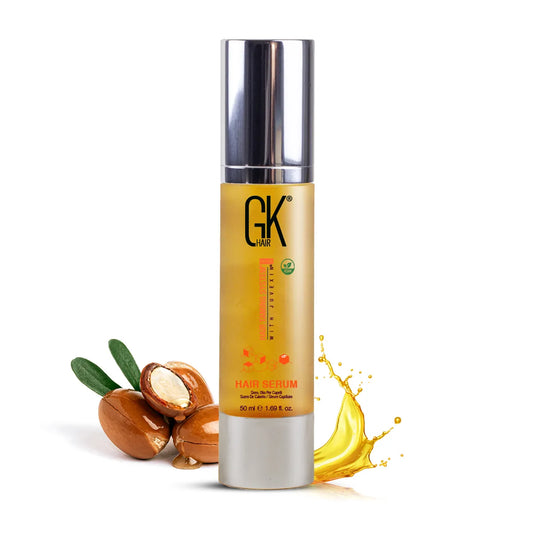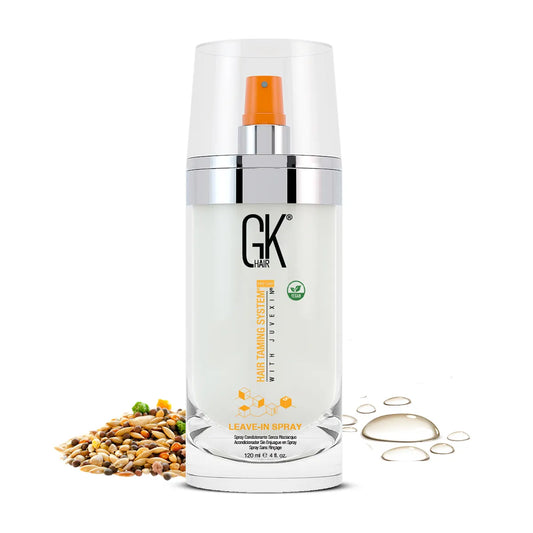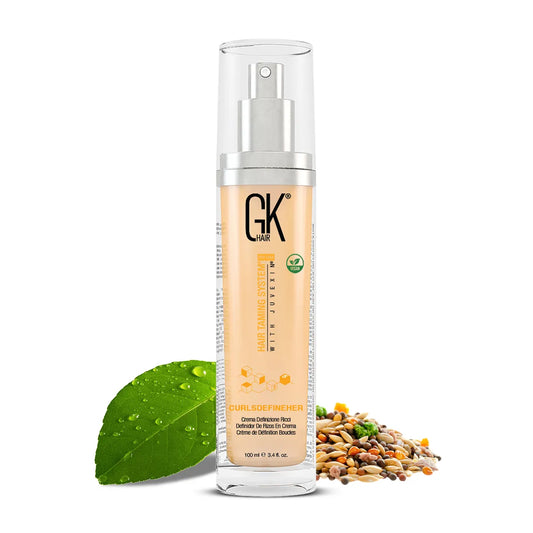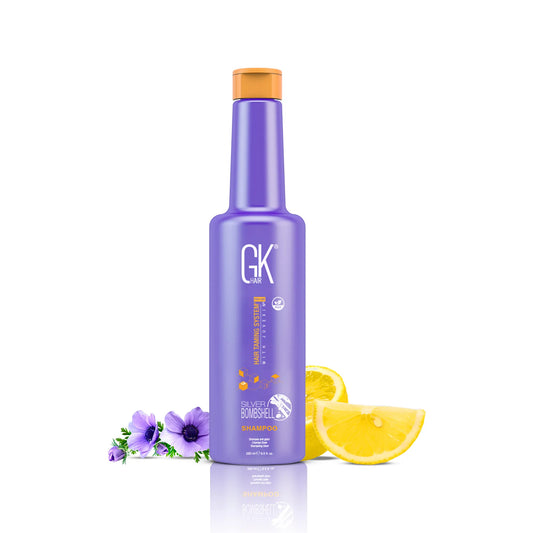Like many of us, you may wonder why a product works perfectly for someone else but doesn’t do the same for you. It usually has less to do with the product and more to do with your hair type. Every strand has its own structure, which is why it responds differently to care. It is therefore essential to know your hair type to find the routine that sustains its health and reveals true beauty.
What Does Hair Type Mean?
When people ask, “what is my hair type?”, that's talking about the natural curl pattern that defines how strands grow from the scalp. Research by PubMed confirms that the curl pattern is largely determined by genetics. While heat or chemical treatments can alter its shape, the original pattern remains in the DNA.
Each time the hair grows through its cycle, genetic traits continue to guide its structure and behaviour. What this means is simple: the best place to start is by embracing the natural form your hair carries and then building care habits around it.
Breaking Down the Main Categories of Hair
The Andre Walker Hair Typing System often classifies them into four groups, each with its own traits and needs. These four groupings are based on how hair types fall into broad patterns that guide how they react to care.
Type 1: Straight Hair
Straight hair belongs to type 1, a category defined by strands that grow without bends or curves. But it is important to confirm whether your strands truly fall under type 1A. One way to identify 1A hair is that each strand is very fine in diameter and cannot hold a wave, no matter the style applied. The three subtypes are:
- Type 1A features strands that are very fine. The hair does not hold a wave and can appear flat against the scalp.
- Type 1B has strands that are straight but carry more body than 1a. The hair looks fuller and is less prone to lying flat.
- Type 1C is not as shiny as types 1a and 1b. Although 1c hair type is subject to oiliness, it looks extremely thick, full, and voluminous.
Practical Means to Care for Type 1 Hair
- Pick shampoos that won’t leave a film behind or weigh your strands down.
- Spread conditioner lightly, just enough to nourish ends without flattening your hair.
- Between washes, dry shampoo comes through as your quick fix to soak up oil and keep hair looking fresh.
- Choose volumizing products when you need extra lift.
Effective Products: Straight hair looks its best when it’s light and easy to manage. GK Hair Balancing Shampoo and Conditioner is made for that. It removes the excess oil, regulates the pH of the scalp and seals the cuticle—so your strands stay smooth and never weigh down.

Type 2: Wavy Hair
Wavy hair belongs to type 2 and falls somewhere between straight and curly strands. It does not grow in a uniform line but bends into gentle curves that form an “S” shape along its length. This shape may appear faint in some and more defined in others, but it is still the marker of this category. It is broken down into three subtypes:
- Type 2A - Soft and subtle, Type 2A is the loosest wave pattern. Hair falls straight at the roots, then bends gently into a wave toward the ends.
- Type 2B - Waves have more body than 2A, but the trade-off is that they can get weighed down easily if too much product is used.
- Type 2C - It carries the deepest waves in this group, with some strands even forming loose corkscrews. It’s fuller and thicker than 2A or 2B, but also more likely to frizz without moisture and care.
How to Care for Wavy Hair
- To prevent flattening of your waves or frizzing, apply light shampoos that wash without depriving your hair of natural oils.
- Condition sparingly—just enough to soften the hair while letting those S-shaped waves bounce freely.
- Define your waves with creams or sprays instead of heavy gels, which can flatten the movement you worked so hard for.
- Giving your heat tools a break is a great idea.
Best pick: Moisturizing products such as GK Hair’s Leave-In Conditioner Spray keep waves looking soft and beautifully defined.
Type 3: Curly Hair
It features curls that are illustrious and bouncy. The pattern is neither loose waves nor tight coils but falls in between as spring-like curls that lift away from the scalp. This form makes the hair look full and lively while also leaving it prone to dryness and frizz.
- Type 3A has wide curls with a loose spiral that looks soft and defined.
- Type 3B has tighter curls that spring back and feel a bit coarse.
- Type 3C is a bold curl pattern with densely packed corkscrew shapes that are absolutely bursting with volume.
Care for Curly Hair
- Ensure you apply rich conditioners to the hair to reduce dryness and soften strands.
- Shampoos that contain moisture but not harsh cleaners are the best.
- Apply creams, butters, or light oils so as to moisturize the seal.
Top choice: Keep your curly hair bouncy and soft with GK Hair CurlsDefineHer. It's a curl-defining cream that smooths strands and brings out natural bounce—all without heaviness.

Tired of recurring frizz on your curls? Check out How to Get Rid of Frizzy Hair without Damaging Your Strands
Type 4: Coily Hair
For this type of hair, imagine strands shaped into tight S-pattern coils, packed as closely as bristles on a toothbrush. This density gives the hair its full look while also making it fragile and prone to dryness. The compact coils often make the hair appear shorter than it truly is. The three groups are:
- Type 4A – soft coils with a visible S-pattern that can hold moisture better than other subtypes.
- Type 4B – tighter coils with a Z-shaped bend that gives the hair less definition but more volume.
- Type 4C – very tight coils with less visible pattern and the highest shrinkage, often delicate to manage.
Gentle Ways to Care for Coily Hair
- You will need to start with a well-nourished leave-in conditioner to keep your coils soft.
- You can rub some oil or butter into the hair when still wet.
- We suggest taking your time and working in small sections—it makes detangling much gentler.
- A simple switch to satin at bedtime helps protect your coils and keep them smooth.
Best pick: For stressed strands, a touch of Argan Oil Serum keeps coils soft and easy to manage.

How Porosity Influences Your Hair Type
When we talk about healthy hair, porosity is one of the first things to understand. It is simply the ability of your hair to absorb water and retain it. Water and products that are applied to low-porosity hair do not get in but remain on the surface.
Medium porosity implies that your hair will absorb moisture evenly and be more balanced. High-porosity hair has a tendency of absorbing water and losing it very quickly.
How to determine hair porosity:
- Take a clean strand of hair.
- Place it in a glass of water at room temperature.
-
Observe the strand:
- Floats = low porosity
- Sinks slowly = medium porosity
- Sinks quickly = high porosity.
3 Ways to Figure Out Your Type of Hair
Knowing your hair type makes it easier to care for your strands properly. “What is my hair type?” You don’t need a salon visit to discover—just try these steps at home.
-
Look at and Feel Your Hair
Examine how thick or thin your strands are and whether they hold moisture well. Notice how your scalp behaves, whether oily, dry, or balanced. -
Take a Hair Type Quiz
Answer simple questions about your curl pattern, volume, and texture to get a clearer picture of your hair type. -
Ask an Expert
Visit a hair stylist or trichologist, as they professionally assess your hair and advise on how to manage it.
Matching Hair Care Products to Your Hair Type in Canada
To make your hair washing and styling easier and more successful, you should use the products that meet your hair type. The right formulas protect hair from dryness, Canadian seasonal changes, and everyday wear.
The common question: "What is my hair type?" is the key to knowing which products will truly work for you. Tested and tried, these GK Hair Shampoos and Conditioners have proven to be effective:
-
Wavy Hair: Keep your waves soft and separated with GK Hair Leave-In Conditioner Hair Spray.
-
Curly Hair: GK Hair CurlsDefineHer boosts moisture, shapes curls, and reduces frizz for fuller coils.
-
Straight Hair: GK Hair Balancing Shampoo and Conditioner leave straight hair smooth and shiny.
Wrap Up—Styling in Line With Your Hair Type
Right about now, the question “What is my hair type?” has probably found its place. Sometimes a product works wonders for someone else but does nothing for you—and most times, that comes down to your hair type. When you know your own, the right products like those from GK Hair collections naturally fall into place. From there, your routine stops being guesswork and turns into care that actually works for your hair.















